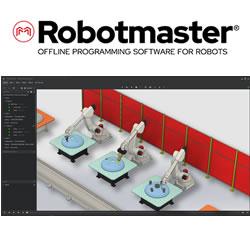Collaborative Robot Applications
UCSD to create robots that see, think and do
Batteries for Robotics Applications
Six-axis robotic arm called Eva, which weighs 2.3 kilograms and will cost $3,000
Simplifying the Design of Robotic Systems
Rob Scharff's Soft Robotics 3D-printed hand responds to human grip
FABTECH 2015 - Interview with Chahe Bakmazjian, Business Team Leader for Robotmaster
RoboticsTomorrow discusses FABTECH 2015 with Jan Abel of Stäubli
Robot Can Pick and Sort Fruit
Special Tradeshow Coverage for FABTECH 2015
Robots Learning Judo Techniques to Fall Down Without Exploding
Vision-Enabled Robot Replaces Four Conventional Flame Treating Robots
Where are the Top Robotics Employers?
Cisco Teams Up with Robotics Firm Fanuc for IoT
Google robotics to become a separate entity under Alphabet?
Records 1351 to 1365 of 2113
First | Previous | Next | Last
Industrial Robotics - Featured Product

